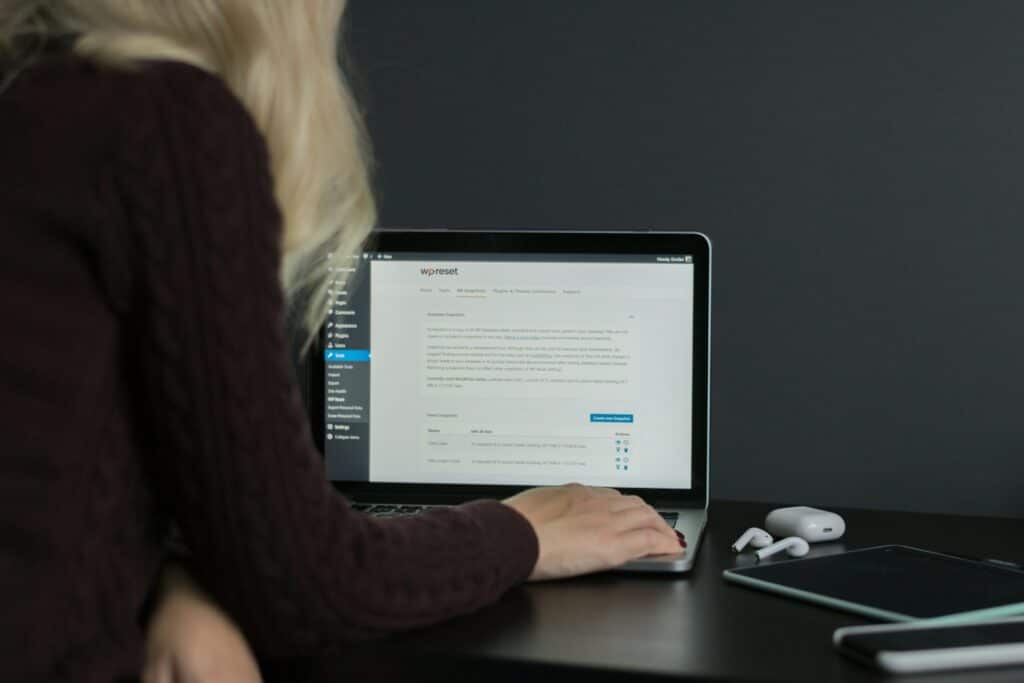Cybersecurity is an ever-present concern for website owners, and it’s particularly crucial for those using WordPress. As one of the most widely used content management systems (CMS), WordPress sites are often targeted by malicious attacks, which can compromise sensitive information, tarnish your online reputation and even bring your website to a standstill.
In this comprehensive guide, we aim to provide the knowledge and actionable steps to keep your WordPress website secure and up-to-date, ensuring a smooth and risk-free online presence.
How To Keep Your WordPress Website Secure and Updated
Considering the potential damage that a security breach can cause, it’s imperative to prioritise the protection of your site. From implementing robust security plugins and tools to maintaining secure login information and managing user access, covering all aspects of website security is crucial. Keeping your WordPress themes, plugins, and core files updated is vital for staying one step ahead of potential threats.
Most website owners don’t realise that website security goes hand-in-hand with regular upkeep and maintenance. A solid maintenance routine can help you prevent security breaches, improve performance and ensure optimal website functionality.
Furthermore, consistent monitoring and prompt reaction to security issues can make all the difference in damage control and recovery.
While most aspects of website security and maintenance can be managed independently, partnering with a reliable WordPress maintenance service can bring peace of mind and long-term stability to your site. With expert maintenance teams handling the nitty-gritty, you’ll be free to focus on growing your business and creating exceptional content.
Armed with the critical knowledge of WordPress website security, update best practices and maintenance essentials, let’s explore the essential steps and tools you can employ to keep your website secure, updated and running smoothly. Stay tuned for expert advice, tips and comparative insights on securing and maintaining a healthy WordPress website.
1. Essential Security Plugins and Tools for Your WordPress Website
One of the most effective ways to protect your WordPress site is by leveraging security plugins designed to detect and prevent potential threats. These plugins often include firewall protection, malware scanning and brute force attack prevention. Here are some of the most popular and reliable WordPress security plugins to consider:
- Wordfence: This comprehensive security plugin offers a web application firewall, real-time threat defence, malware scanning and even login security features.
- iThemes Security: With multiple layers of protection, iThemes Security covers diverse areas such as brute force protection, file change detection and login attempt limiting.
- Sucuri Security: Sucuri’s all-in-one solution combines a robust firewall, malware scanning and security hardening features to ensure comprehensive website protection.
In addition to using security plugins, it’s essential to implement an SSL certificate for your website. SSL refers to Secure Socket Layer, which encrypts data transmitted between your server and users’ browsers.
You can obtain an SSL certificate from your hosting provider or a third-party SSL provider. An added benefit of implementing SSL is its positive impact on search engine rankings, as Google gives preference to secure websites.
2. Protecting WordPress Login Information and User Access Management
To minimise the risk of unauthorised access to your WordPress website, it’s crucial to manage login information and enforce strict user access protocols. Implement the following measures to strengthen your website’s login security:
- Create Strong Passwords: Encourage the use of complex, unique passwords combining uppercase and lowercase letters, numbers and special characters. Advise users to avoid common words or personal information, which can be easily guessed or cracked.
- Limit Login Attempts: Employ plugins like Login LockDown or WPS Limit Login to restrict the number of unsuccessful login attempts within a specific time frame, reducing the risk of brute force attacks.
- Implement Two-Factor Authentication (2FA): Utilise plugins such as Google Authenticator or Duo Two-Factor Authentication to require users to verify their login with an additional security method, such as a unique code sent via SMS or an authenticator app.
- Manage User Roles: Assign appropriate user roles based on the required access levels, with administrative access granted only to trusted personnel. Regularly review user accounts and revoke access for inactive or unnecessary users.
3. Keeping WordPress Themes, Plugins and Core Files Updated
Updating your WordPress website’s themes, plugins and core files is vital to website security, as outdated components may contain vulnerabilities exploited by hackers. Regular updates often include patches for known security flaws, ensuring your website remains protected from new threats. Follow these best practices for maintaining your WordPress website’s components up-to-date:
- Monitor Updates: Regularly check your WordPress admin dashboard for available updates or enable email notifications to inform you when new updates are released.
- Back Up Before Updating: Always create a full backup of your website before applying any updates, ensuring you have a fallback option in case something goes wrong.
- Update One Component at a Time: Apply updates to one plugin, theme, or core file at a time, allowing you to identify and resolve any compatibility issues or conflicts that may arise.
- Test on a Staging Site: If possible, test updates on a staging environment before applying them to your live site, reducing the risk of unexpected disruptions to your website’s functionality.
4. Regular Website Maintenance Best Practices
Consistent website maintenance is essential to keep your WordPress site secure, optimised and up-and-running. Consider these best practices for regular website upkeep:
- Backup Your Site: Regularly create full backups of your website, including your database and files. Store these backups securely, and have a plan in place to restore your site if the need arises.
- Audit Themes and Plugins: Periodically review and evaluate the themes and plugins installed on your website, removing any outdated or unused components.
- Monitor Website Performance: Use tools like Google Analytics and Google Search Console to track your website’s performance, identifying and resolving any issues that may compromise user experience or search engine rankings.
- Scan for Malware and Vulnerabilities: Regularly scan your website for malware, vulnerabilities and potential hacks using security plugins or external tools.
Looking for a complete WordPress Maintenance Plan?
With all ThriveWP care plans, we include free migration, malware removal, daily/hourly backups, plugin theme and core updates, ongoing support and 24/7 security monitoring and firewall.
Conclusion
Maintaining a secure and updated WordPress website is essential for both your online reputation and the smooth operation of your site. By implementing robust security measures, closely monitoring user access, ensuring timely updates and following regular maintenance best practices, you can significantly reduce the risk of security breaches and keep your website performing optimally.
While many aspects of website security and maintenance can be managed independently, partnering with a reliable WordPress maintenance service such as ThriveWP can alleviate the burden and ensure consistent, expert support.
With a professional maintenance team handling the details, you can focus on growing your business and creating exceptional content, knowing that your website remains secure and well-functioning. Embrace a proactive approach to website security and experience the benefits of a stable and trustworthy online presence.
Don’t let your WordPress website fall by the wayside! Keep it in tip-top shape with ThriveWP – the ultimate WordPress maintenance service. Our UK-based experts specialise in WordPress support, site care and management services, so you can rest easy knowing your website is in good hands. With our WordPress maintenance packages, you can customise your plan to fit your specific needs and budget. So what are you waiting for? Sign up today and let us help you thrive online!






